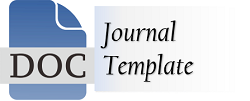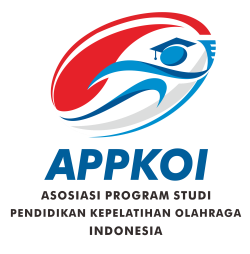Development of Teaching Materials for Physical Fitness Materials Based on AutoPlay Media Studio 8 Application for Students of MTsN 1 Malang City
DOI:
https://doi.org/10.31599/g05s7j53Keywords:
teaching materials, physical fitness, interactive multimedia, SDGs quality educationAbstract
AutoPlay Media Studio 8 is an interactive multimedia application with many features, this study was developed to facilitate students in understanding physical fitness material. The purpose of this study is to add and develop fitness teaching materials based on AutoPlay Media Studio 8 for students of MTsN 1 Malang City. This type of research is included in research and development. The development model used in this study is ADDIE, which consists of 5 stages, namely analysis, design, development, implementation, and evaluation. The sample involved in this study was 60 students of MTsN 1 Malang City. In addition, several experts were involved in product validation, namely 1 physical education learning expert, 1 physical fitness material expert, 1 media expert and 4 practitioners, namely MTsN 1 Malang City PJOK teachers. The instruments used in this study were interview guidelines, product assessment questionnaires, documentation. Based on the data obtained from the results of data analysis by experts, namely learning experts obtained results of 89%, material experts obtained results of 90%, media experts obtained results of 99%, class VII PJOK teacher practitioner experts obtained results of 94%, class VIII PJOK teacher practitioner experts obtained results of 96%, class IX PJOK 1 teacher practitioner experts obtained results of 90%, class IX PJOK 2 teacher practitioner experts obtained results of 83%, class VII field trials 97%, class VIII field trials 98%, class IX field trials 96%. The results of data analysis from experts, practitioners and field trials obtained the results of "Very Suitable for Use".
Downloads
References
Afandi, A., Sugiarto, H., & Pertiwi, K. D. (2024). Non-communicable disease education for students as a preventive health effort at PGRI Temanggung High School. Indonesian journal of community empowerment (ijce), 6(2), 238-243. https://doi.org/10.35473/ijce.v6i2.3500
Agus, A., & Sepriadi, S. (2021). Fitness Management. Padang: Sukabina Press.
Akbar, A., & Noviani, D. N. (2019). Challenges and Solutions in the Development of Educational Technology in Indonesia. https://jurnal.univpgri-palembang.ac.id/index.php/Prosidingpps/article/view/2927
Almira, D., & Nurrochmah, S. S. (2019). Survey of Physical Fitness Level in Junior High School. In Sport Science and Health | (Vol. 1, Issue 2). http://journal2.
Arifin, M. B. U. B. (2018). Textbook of educational research methodology. Sidoarjo: Umsida Press.
Arzani Mukhlis, N., Kurniawan, A. W, Kurniawan, R., Physical Education, J., and Recreation, K., & Sports Science, F. (2020). Development of Interactive Multimedia-Based Strength Element Physical Fitness Media. Sport Science and Health |, 2(11), 2020. http://journal2.um.ac.id/index.php/jfik/indexhttp://fik.um.ac.id/
Branch, R. M. (2010). Instructional design: The ADDIE approach. In Instructional design: The ADDIE approach. Springer US. https://doi.
Cahyadi, R. A. H. (2019). Development of Teaching Materials Based on Addie Model. Halaqa: Islamic Education Journal, 3(1), 35-42. https://doi.
Corbin, C. B. (2008). Concepts of physical fitness: active lifestyles for wellness. McGraw-Hill. Americas: William Glass.
Damayanti, E., Santosa, A. B., Zuhrie, M. S., & Rusimamto, P. W. (2020). The Effect of Using Interactive Multimedia-Based Learning Media on Student Learning Outcomes Based on Learning Style. Journal of Electrical Engineering Education, 9(3), 639-645. https://doi.
Darnoto, D., & Dewi, H. T. (2020). Teenage promiscuity in the millennial era from the perspective of Islamic religious education. Tarbawi Journal of Islamic Education, 17(1). https://doi.org/10.34001/tarbawi.v17i1.1189
Effendi, D., & Wahidy, D. A. (2019). Utilization of Technology in the Learning Process Towards 21st Century Learning. https://jurnal.
Fitrian, A., & David Blitar District Education Office, T. (2023). Development of a Physical Fitness Training Model Based on Snakes and Ladders Game. Jambura Sports Coaching Academic Journal, 2(1). https://doi.
Freeman, W. H. (2013). Physical education, exercise and sport science in a changing society. America: Jones & Bartlett Publishers.
Ghazali Arief, M., Kurniawan, A.W, R., Physical Education, J., and Recreation, K., & Sport Science, F. (2023). Development of Learning Physical Fitness Elements of Agility Based on Interactive Multimedia. Sport Science and Health |, 3(2), 2021. http://journal2.
Hanifah, U., Niar, S. &, University, A., & Dahlan Yogyakarta, A. (2021). The Role of Educational Technology in Learning. In Jurnal Keislaman dan Ilmu Pendidikan (Vol. 3, Issue 1). https://ejournal.
Harris, J.P. (2018). The case for physical education becoming a core subject in the National The case for physical education becoming a core subject in the National Curriculum Curriculum Please Cite The Published Version. (n.d.). http://www.
Ilmi, M., Kurniawan, A. W., & Supriatna, E. (2023). Development of Interactive Multimedia-Based Physical Fitness Learning Media for the Elements of Fitness at SMA Negeri 1 Turen. Journal of Sport Science, 6(1), 79. https://doi.
Kaharuddin, A. (2020). Innovative & Variative Learning (Vol. 2020). South Sulawesi: Almaida Heritage.
Kartika, J., Sari, S. N., Sari, I. P. R., Romadhona, S. B., & Putri, N. C. M. (2024). Education on the Importance of Preventing Non-Communicable Diseases (Ptm) in Students of Man 1 Muara Enim. Journal of Nursing and Midwifery Science, 15(1), 87-93. https://doi.
Kuning, P. W., & Hariyanto, E. (2024). Survey of physical fitness levels of extracurricular sports participants at smpn 17 malang. Jayabama Journal of Sports Interest, 3(1), 31-42. https://doi.org/10.6732/jayabama.v3i1.3823
Kurniawan, A. W, Krisna Hadi Surya, K., Kurniawan, R., Physical Education, J., and Recreation, K., & Sport Science, F. (2022). Development of Learning Media for Physical Fitness Activities for the Elements of Fitness Based on Interactive Multimedia in Junior High School. https://doi.
Kurni, D. K., & Susanto, R. (2018). The Influence of Classroom Management Skills on the Quality of the Learning Process in Elementary Schools in the Higher Grades. Scientific Journal of Elementary School Teacher Education, 2(1), 11510. https://doi.
Kosasih, E. (2021). Development of teaching materials. Jakarta: Bumi Aksara.
Lengkana, A. S., & Muhtar, T. (2021). Physical Fitness Learning. Bandung: CV Salam Insan Mulia.
Lubis, A. F., Gany, R., Sakti, G. P., Lestari, N. A., & Al Qudsi, M. A. (2022, November). Strengthening Character Education Through Education on the Dangers of Promiscuity in Adolescence at Sma Negeri 3 South Tangerang. https://jurnal.
Mesra, R., Pratiwi, D., Handayani, R., Wiguna, I. B. A. A., Suyitno, M., Sampe, F., & Aina, M. (2023). Education Technology. Banten: Sada Kurnia Pustaka.
Mulia, H. R. (2019). Multimedia-based learning: an effort to understand the diversity of children's learning styles. Journal of Quality Assurance, 5(02), 144-154. https://doi.
Mulyasa, H. E. (2023). Implementation of Merdeka Curriculum. Jakarta: Bumi Aksara.
Nasrulloh, A., Dwi, K., & Prasetyo, A. Y. (2021). Fitness Measurement and Training Methods. Yogyakarta: UNY Press.
Purnama, S. (2010). Color Elements in Islamic Learning Multimedia Development. https://doi.
Riyana, C. (2012). Learning media. Jakarta: General of Islamic Education.
Rohmah, L., & Muhammad, H. N. (2021). Physical fitness level and physical activity of school students. Journal of Surabaya State University, 9(01), 511-519. https://ejournal.
Samsudin, S. (2019). The Role of Islamic Religious Education in Shaping Personality in the Era of Disruption. Tribakti Journal of Islamic Thought, 30(1), 148-165. (n.d.). https://doi.
Saputra, D., & Edwarsyah, E. (2024). Physical Fitness Level of Class VIII Students of SMP Negeri 5 Padang City. JPDO Journal, 7(11), 2603-2612. https://doi.org/10.24036/JPDO.7.11.2024.1024
Sartika, B., Sri, R., Vanda, U., Luluk, R., Rochmah, (2022). Textbook of Learning and Learning. Sidoarjo: Umsida Press.
Setyosari, H. P. (2016). Education & development research methods. Jakarta: Prenada Media.
Silaban, R. A., Ilahi, A., Effendi, E., Sari, M. N., Putri, R. T. H., Syarifah, H., ... & Sinaga, D. (2024). Learner Learning Styles. Mifandi Mandiri Digital Publisher, 1(01).
Sugiyono. (2022). Quantitative, Qualitative, and R&D Research Methods. Bandung: Alfabeta.
Syahrastani, S., Zulman, Z., & Sepriadi, S. (2024). Review of Physical Fitness of Class VIII Students of SMP Negeri 2 Pariaman. JPDO Journal, 7(1), 1-10. http://jpdo.
Tarumasely, Y. (2022). Learning planning textbook (Vol. 1). Lamongan: Academia Publication.
Triwiyanto, T. (2022). Curriculum and learning management. Jakarta: Bumi Aksara.
Widodo, A., & Wahyuni, E. S. (2016). The Relationship between Students' Physical Fitness Level and Physical Education, Sports and Health Learning Outcomes. Journal of Sport and Health Education, 4(01), 48-55. https://ejournal.unesa.ac.id/index.php/jurnal-pendidikan-jasmani/article/view/38199
Wulandari, E. (2022). Utilization of Interactive Powerpoint as Learning Media in Hybrid Learning. JUPEIS Journal of Education and Social Sciences, 1(2), 26-32. (n.d.). https://doi.
Downloads
Published
Issue
Section
License
Copyright (c) 2025 Khasanatul Barikah, Ari Wibowo Kurniawan

This work is licensed under a Creative Commons Attribution 4.0 International License.






.png)







